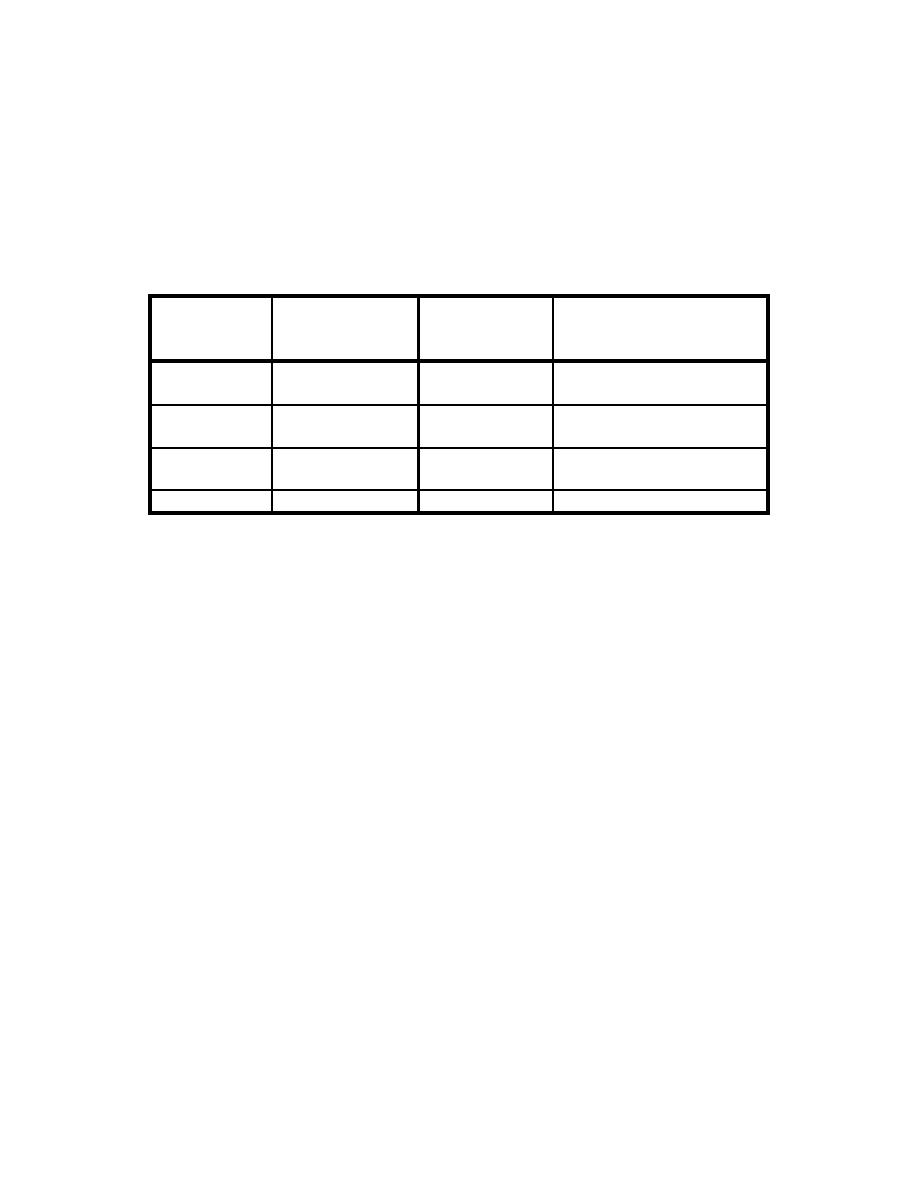
UFC 4-159-03
3 October 2005
The above methods for determining the eccentricity ratio are recommended for
normal design conditions with moderate current speeds of less than 1.5 m/s (3 knots or
5 ft/sec). Values provided in Table 4-10 are based upon least squares fit of scale model
data taken for the case of ships with level keels. Data are not adequately available for
evaluating the effect of trim on the current moment.
Table 4-10. Current Moment Eccentricity Ratio Variables
a
b
NOTES
SHIP
Y-INTERCEPT
SLOPE PER
DEGREE
SERIES 60
-0.291
0.00353
Full hull form typical of
cargo ships
FFG
-0.201
0.00221
"Rounded" hull typical of
surface warships
CVE-55
-0.168
0.00189
Old attack aircraft
carrier
SS-212
-0.244
0.00255
Old submarine
4-6
WIND AND CURRENT FORCES AND MOMENTS ON MULTIPLE
SHIPS. If ships are moored in close proximity to one another then the nearby ship(s)
can influence the forces/moments on a given ship. The best information available on the
effects of nearby ships is results from physical model tests, because the physical
processes involved are highly complex. NFESC Report TR-6003-OCN provides scale
model test results of wind and current forces and moments for multiple identical ships.
From two to six identical ships were tested and the test results were compared with test
results from a single ship. Data are provided for aircraft carriers, destroyers, cargo
ships, and submarines.
Cases included in NFESC Report TR-6003-OCN include: individual ships,
ships in nests and ships moored on either sides of piers. Results are provided for the
effects of winds and currents in both tabular and graphical form.
96



 Previous Page
Previous Page
